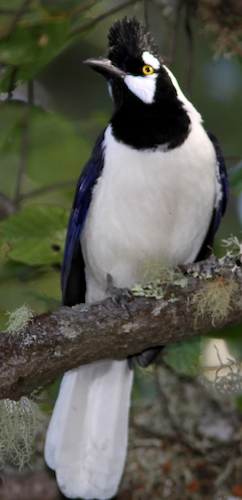Free and Sovereign State of Nayarit

Birding Nayarit
Nayarit is one of Mexico’s 31 states and is located on the central west coast, bordering the Pacific Ocean. Nayarit is surrounded by the states of Sinaloa to the northwest, Durango to the north, Zacatecas to the northeast and Jalisco to the south with the Pacific Ocean bordering it to the west. Nayarit is one of Mexico’s 31 states and is located on the central west coast, bordering the Pacific Ocean. Nayarit is surrounded by the states of Sinaloa to the northwest, Durango to the north, Zacatecas to the northeast and Jalisco to the south with the Pacific Ocean bordering it to the west. Nayarit covers 26,908 square kilometers (10,389.2 sq mi), making it one of the smaller states of Mexico. Nayarit is located between latitude lines 23°05′ north and 20°36′ south and longitude lines 103°43′ east and 105°46′ west. Its terrain is broken up by the western ends of the Sierra Madre Occidental mountains. Its highest mountains are: San Juan, Sanguangüey, El Ceboruco, Cumbre de Pajaritos and Picachos. Nayarit has two volcanoes, Ceboruco and Sangangüey. In the northeast are broad, tropical plains watered by the Río Grande de Santiago, a continuation of the Lerma River. The main state rivers are the Río Grande de Santiago, San Pedro, Acaponeta, Ameca and Las Cañas. The last two also form natural boundaries with the states of Jalisco and Sinaloa, respectively. Nayarit also has several lagoons such as the Santa María del Oro, San Pedro Lagunillas and Agua Brava.A variety of products are able to be produced in Nayarit due to its variable geography and climate. Volcanic soil, heavy rains and many altitude variations due to the mountains allow for the diverse crops. The crops include grain, sugarcane, cotton, coffee, and tobacco. Forest wealth is also taken advantage of and cattle raising is also important.
A locally based birder has kindly submitted the following notes on the birding opportunities provided by this under watched Mexican state:The City of San Blas and area : The ciyt was once a quiet fishing village, but it has changed a lot in recent years. Nevertheless, its still one of the BEST birding areas in Mexico. It has at least seven different eco-systems. Great birding is to be had on Peso island, [called that because they used to charge one (1) peso for a boat trip to the island] but of course the price has gone up since then. Next is the Fort & Cemetery – Sewage pond road is the next on the list. Then comes the trip up the Rio San Cristobol River, take this in the early morning and make arangments in ADVANCE for the best birding.Take the trip to La Tovara in the evening looking for the Northern Potoo, owls & much more. You can take the trip in the La Tovara lagoon in the early morning you need to make arrangments in ADVANCE for this trip too. El Pozo Estuary can be excellent – again make reservations in ADVANCE. Other nearby birding hotspots to see are the Shrimp Ponds, Guadalupe Victoria Road, Roadside lagoon, Chacalilla, Singayta, Mecatan West Entrance, El Palillo, Cocodrilario Road, and La Bajada. Mirador del Aguila is the place to find MILITARY MACAWS also great is Rancho La Noria. If that is not enough you can also go WHALE WATCHING!
-
La Laguna de Santa Maria del Oro
WikiSatellite ViewLa Laguna de Santa Maria del Oro, is a volcanic crater lake in western Mexico, near Tepic in the foothills of the sierra Madre mountains, the picturesque lake of about 2km diameter is located at 2300ft altitude, and is surrounded by mountains rising to about 3500ft nearby, and 6000ft further away (the first range of the sierra Madre). There are over 260 different species seen with in 10 miles of the lake. There are a variety of habitats, lake streams agriculture fields thorn forests, tropical deciduous forest, pine-oak forest scrub. It offers excellent winter birding in a moderately warm and dry climate in the transition zone between the coastal lowlands and the interior highlands (San Blas is only a two hours away)
-
NP Isla Marietas
InformationSatellite ViewThe Marieta Islands (Spanish: Islas Marietas) are a group of small uninhabited islands a few miles off the coast of Nayarit, Mexico. They are very popular tourist destinations because of the abundant marine life populations due to the islands being protected from fishing and hunting by the Mexican government.
-
Koala Bungalows
AccommodationMany species may be found around Koala and within a short distance of the lake. The beautiful magpie jays are everywhere and painted buntings are often spotted. The first birding fesival for the "lagunas encantadas" was held from 2nd to 9th of March this year (2012)… -
Mar al Cielo Eco-Retreat
AccommodationMar al Cielo is a secluded jungle eco-retreat located on 4 hectares of ocean-front paradise. This private retreat is privileged to the adventurous traveler who is seeking an enchanting vacation experience, intimate interaction with nature and unsurpassed serene beauty all in wonderful comfort and cultural style. A place for one to explore the truly wild places that remain -
Playa Las Tortugas [Turtle Beach]
AccommodationCome stay at the villas of Playa Las Tortugas, adjacent to a spectacular beach, and protected estuary which is home to hundreds of bird species and other animals. -
Villa Bella B&B
AccommodationLa Cruz de Huanacaxtle is a small fisherman village ten minutes north of Puerto Vallarta
